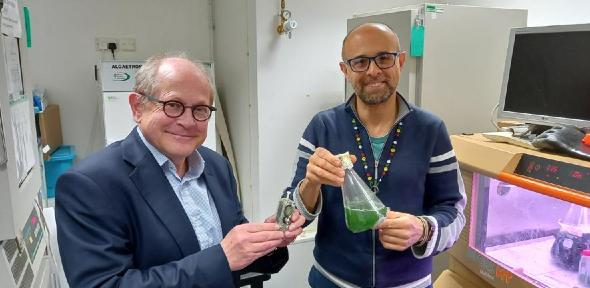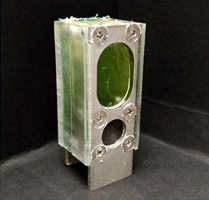
Researchers have used a widespread species of blue-green algae to power a microprocessor continuously for a year - and counting - using nothing but ambient light and water. Their system has potential as a reliable and renewable way to power small devices.
The system, comparable in size to an AA battery, contains a type of non-toxic algae called Synechocystis that naturally harvests energy from the sun through photosynthesis. The tiny electrical current this generates then interacts with an aluminium electrode and is used to power a microprocessor.
The system is made of common, inexpensive and largely recyclable materials. This means it could easily be replicated hundreds of thousands of times to power large numbers of small devices as part of the Internet of Things. The researchers say it is likely to be most useful in off-grid situations or remote locations, where small amounts of power can be very beneficial.
"The growing Internet of Things needs an increasing amount of power, and we think this will have to come from systems that can generate energy, rather than simply store it like batteries,” Professor Christopher Howe, Department of Biochemistry
In the experiment, the device was used to power an Arm Cortex M0+, which is a microprocessor used widely in Internet of Things devices. It operated in a domestic environment and semi-outdoor conditions under natural light and associated temperature fluctuations, and after six months of continuous power production the results were submitted for publication.
"We were impressed by how consistently the system worked over a long period of time – we thought it might stop after a few weeks but it just kept going,” Dr Paolo Bombelli, Department of Biochemistry.
The algae does not need feeding, because it creates its own food as it photosynthesises. And despite the fact that photosynthesis requires light, the device can even continue producing power during periods of darkness. The researchers think this is because the algae processes some of its food when there’s no light, and this continues to generate an electrical current.
Bombelli, P. et al: ‘Powering a Microprocessor by Photosynthesis.’ Energy & Environmental Science, May 2022. DOI: 10.1039/D2EE00233G
Image credit: Paolo Bombelli
Read the original full University of Cambridge article.


